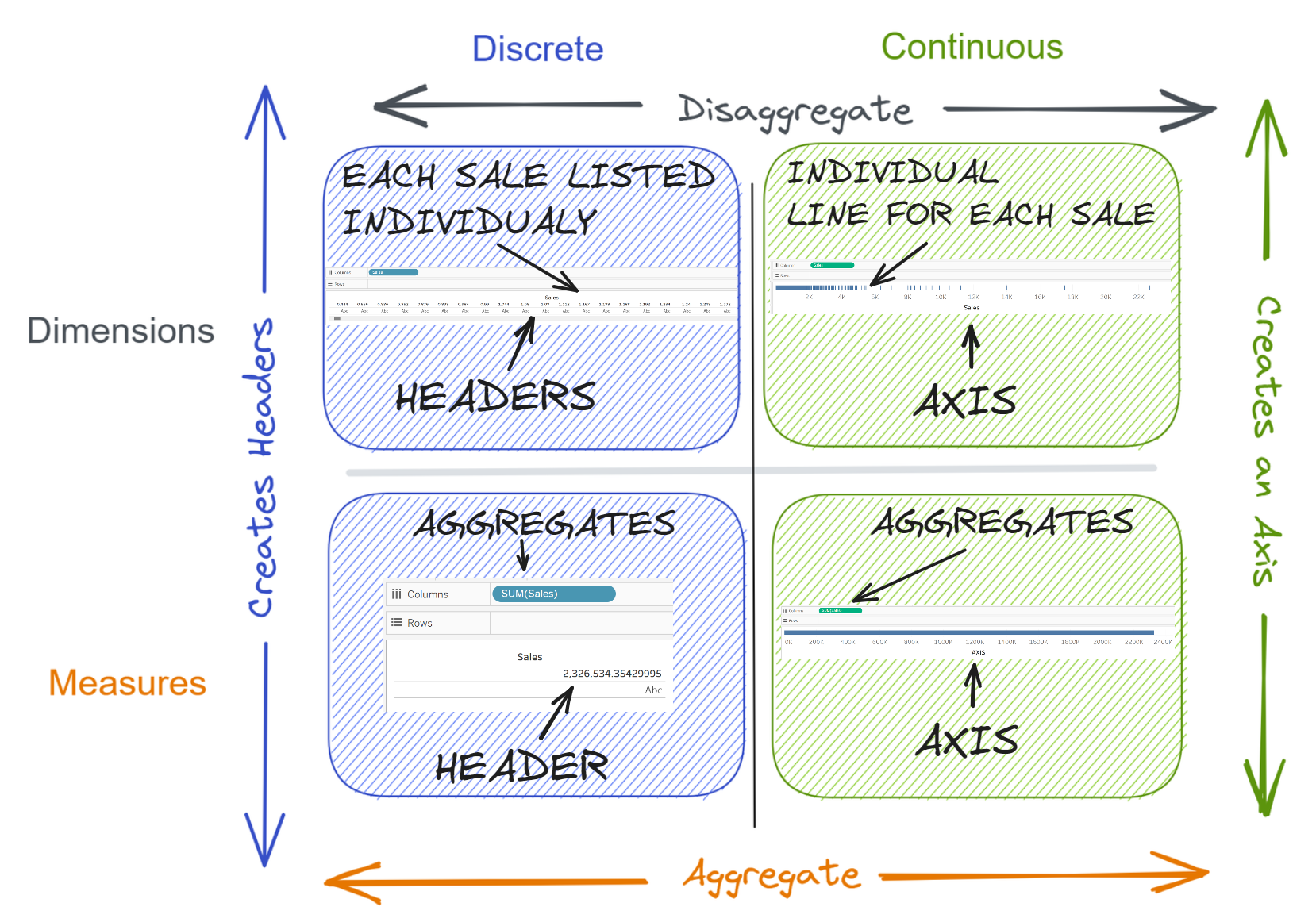When you start using tableau, you will notice that certain fields are green and certain fields are blue. As you start to play around, you will see that they behave differently, depending on whether they are blue or green.
IMPORTANT:

A common misconception is that blue means that the data is a dimension and green means it is a measure. This is incorrect. To see if your field is a dimension or measure, look at your data pane. Things above the grey line are dimensions, and below are measures:

Dimensions and measures can be either discrete or continuous. What is the difference?
Simply put, a dimension splits up the view into different levels of detail and a measure aggregates the information. For example, if we look at the Sample Superstore dataset and drag our profit onto the rows pane, tableau automatically sums the sales to give a total:

If we now drag in a dimension (I will demonstrate using region), we now have the sum of sales split up by each region:

You may have noticed that the measure I dragged in was green and the dimension blue. This is Tableau's default but can be manually changed. The reasons to do this will be explained later in this blog.
What does the blue and green mean?
I have told you that blue and green doesn't indicate dimensions or measures, so what does it indicate? Blue means that the field is discrete and green means continuous. Again, each type causes tableau to work in different ways:

So, discrete fields create headers and continuous fields create axes.
Overall, this can be summarised in this handy visual:

In the following example, I changed sales from it's default continuous measure to the four different combinations to see how it affects our view:

Think about how you want your data to be displayed.
There are use cases for all of these different combinations of measures, dimensions, continuous and discrete data types.
